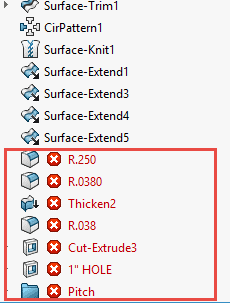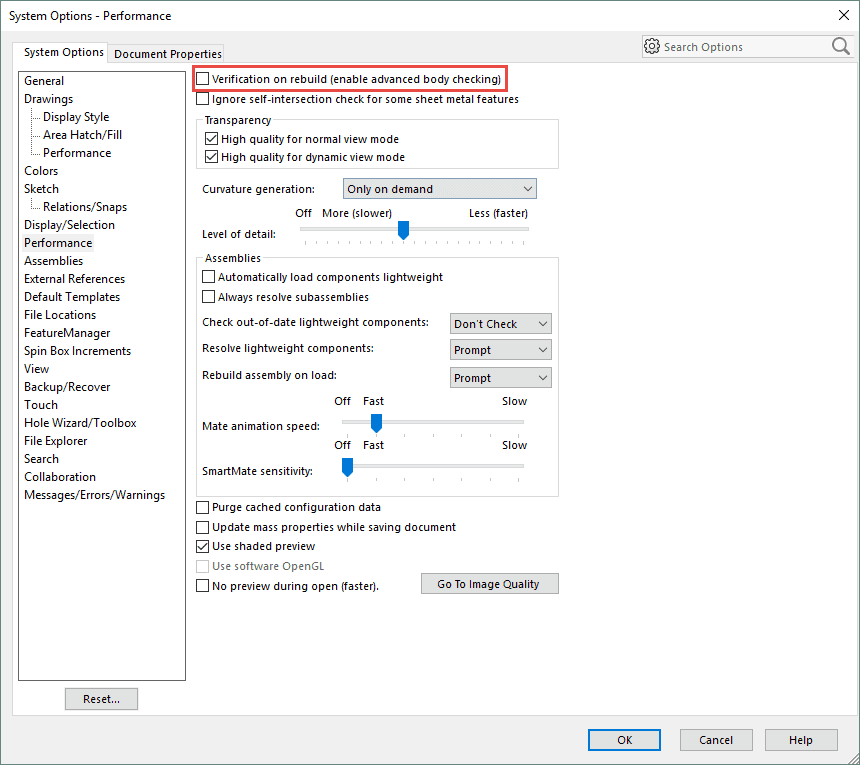SOLIDWORKS: Rebuild Errors After Upgrade
Rebuild Errors After Upgrade
Why do I have all these SOLIDWORKS rebuild errors after upgrading to a new version?
With every current new release of SOLIDWORKS, we get a number of support calls regarding rebuild errors. The most common is “I have just upgraded, now I am seeing rebuild errors on a lot of our older files….these were not previously there…why?”
Sometimes you will still have the older version of SOLIDWORKS installed. Opening them in the older version still will not show the errors; what is the cause?
Well there is usually one simple reason this is occurring: Verification on Rebuild!
Turning this option on in a previous version will usually then display these errors also.
| Previous Version | New Version |
 |
 |
O.K., so what does this mean? Well to start, the option for verification on rebuild is located under Tools/Options/System Options – Performance.

By default, this option is turned off. So you ask what does this actually do? SOLIDWORKS explains this in their solution Id: S-09049.
What does ‘Verification on Rebuild’ actually do and how should it be used?
The “Verification on Rebuild” option is an advanced body checker, activated in Tools > Options > Performance. With Verification on Rebuild off, when new faces are created by a feature, SOLIDWORKS checks to make sure that these new faces do not intersect or overlap any adjacent faces in the solid model. By default, SOLIDWORKS does not check each new face against every existing face in the solid. This will only be done with Verification on Rebuild turned on (this is only applicable at the part level).
From the help: by default, each time a feature is added or modified, the feature is checked against any adjacent faces and edges. To increase the level of error checking, turn on the Verification on Rebuild option. When this option is turned on, the software checks every new or changed feature against all existing faces and edges, not just adjacent faces and edges. Features that cause invalid geometry fail when this option is turned on. This option has a negative effect on performance. Rebuilding the model is considerably slower and more CPU-intensive. This option applies to all documents, not just the active document. Use this option only when needed, and then be sure to turn it off when done.
Now that you understand what Verification on Rebuild does, why are there rebuild errors when opening older files what this is turned off in the newer version?
On first rebuild of a file in a new major release, all features are checked against all faces in the model to highlight any potential model issues. For this reason, some models my return errors in a new version of SOLIDWORKS, which did not in a previous version.
This will also effect performance when opening files (especially large assemblies/drawings for the first time in a new release since it has to run the checks on every single component), so make sure when you open previous released files, always do a “Save All” to convert these so that next time you open them, it will not have to run the verification.
Blake Cokinis
Sr. Support Product Specialist
Computer Aided Technology

 Blog
Blog